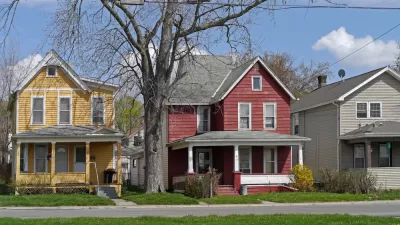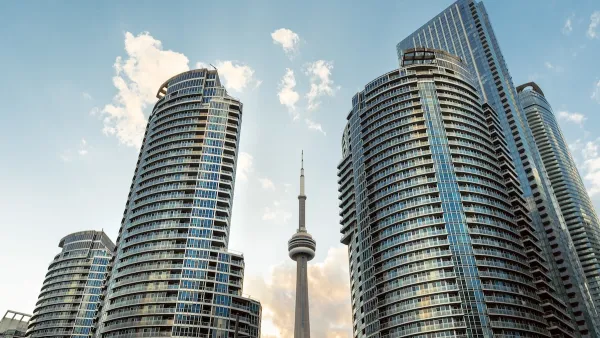For low-income residents in high-cost areas, there's no substitute for the public sector to provide below-market rate housing. But for middle-income households, the market should be able to produce housing without subsidy. So why doesn't this happen?

In a previous Shelterforce blog post, I argued that we cannot give up hope that the market will build middle-income housing. Granted, over the past decade, most new housing has been built in the luxury segment of the market, yet some argue that this isn’t a problem because the luxury housing naturally "filters" down and eventually offers everyone the benefit of lower rents and prices. I agree that refusing to build luxury housing (in the face of rising demand from wealthy households) will only make the housing problem worse for everyone else, but exclusively building luxury housing is no strategy for addressing the housing problems of low-income or even middle-income people.
For low-income residents in high cost areas, there is no substitute for public sector action to provide below-market rate housing, but for middle-income households, the market really should be able to provide appropriate housing without government subsidy. It is not doing that now, but we shouldn’t give up on the idea because ultimately it will bring more benefit to a wider segment of the population than luxury housing can.
So why doesn’t this happen?
This is a surprisingly complex problem that is made all the worse by the fact that everyone seems to expect it to have a very simple answer. In local policy discussions, I hear two grossly simplistic answers that I believe do more harm than good. Some people seem predisposed to conclude that we don’t build more moderate-income housing because of developer greed. Another group of people want the culprit to be unnecessary government regulation. Both explanations stand in the way of really understanding the problem and doing something effective to solve it.
Do Developers Focus on Luxury Housing Because They’re Greedy?
Of course developers are motivated by profit, but I don’t think there is any reason to believe that real estate developers are any more (or less) greedy than producers in any other industry. Yet when you look at most other consumer goods, the market provides options at a range of price, and quality, points. In the auto market, working class and middle-income people don’t all drive 40-year-old BMWs and Mercedes, many buy brand new Ford Focuses and Honda Civics.
While some of the most profitable cars on the road are luxury cars, the Ford F-150 pickup truck and the Toyota Camry are also at the top of the list, and it’s not hard to see why. In 2016, Toyota sold almost 400,000 new Camrys and nearly as many new Corollas. Their best selling luxury car, the Lexus EX, sold only 50,000 units. Even assuming they earn a much higher margin per car, luxury models are not better investments because the volume is so much lower.
It is pretty clear that the real estate industry would make vastly more money if it were to build more housing for middle-income households, even if the profit per unit were lower on those projects. So the problem can’t be as simple as greed.
FULL STORY: Why Aren’t We Building Middle Income Housing?

Maui's Vacation Rental Debate Turns Ugly
Verbal attacks, misinformation campaigns and fistfights plague a high-stakes debate to convert thousands of vacation rentals into long-term housing.

Planetizen Federal Action Tracker
A weekly monitor of how Trump’s orders and actions are impacting planners and planning in America.

In Urban Planning, AI Prompting Could be the New Design Thinking
Creativity has long been key to great urban design. What if we see AI as our new creative partner?

King County Supportive Housing Program Offers Hope for Unhoused Residents
The county is taking a ‘Housing First’ approach that prioritizes getting people into housing, then offering wraparound supportive services.

Researchers Use AI to Get Clearer Picture of US Housing
Analysts are using artificial intelligence to supercharge their research by allowing them to comb through data faster. Though these AI tools can be error prone, they save time and housing researchers are optimistic about the future.

Making Shared Micromobility More Inclusive
Cities and shared mobility system operators can do more to include people with disabilities in planning and operations, per a new report.
Urban Design for Planners 1: Software Tools
This six-course series explores essential urban design concepts using open source software and equips planners with the tools they need to participate fully in the urban design process.
Planning for Universal Design
Learn the tools for implementing Universal Design in planning regulations.
planning NEXT
Appalachian Highlands Housing Partners
Mpact (founded as Rail~Volution)
City of Camden Redevelopment Agency
City of Astoria
City of Portland
City of Laramie



























